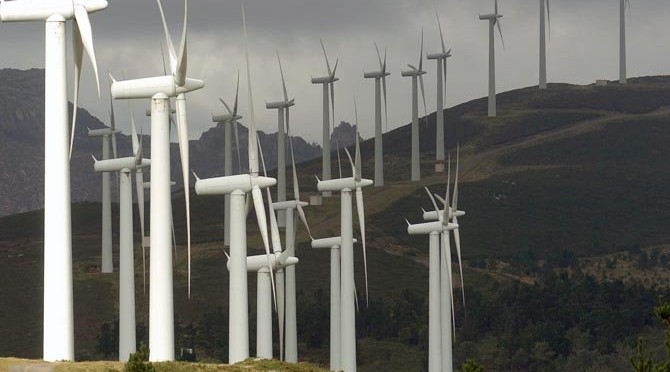Galicia lives immersed in a situation of uncertainty and defenselessness, regarding wind development, as a consequence of the massive judicialization of projects that have the mandatory environmental impact declaration (DIA) and the corresponding construction permit. The Superior Court of Xustiza of Galicia has just announced the suspension of 13 new projects based on “prevalence, prevention and precaution in environmental matters.” However, after the Supreme Court’s ruling last December, annulling the successive precautionary suspensions of more than 200 MW, it was clear that all the parks that were being paralyzed, following lawsuits alleging defects in the public consultation process, were had been processed correctly, according to the Wind Business Association (AEE).
The Galician court now relies on the environmental zoning map, published by the Ministry for the Ecological Transition and Demographic Challenge (MITECO) as a reference to the hypothetical environmental damage of the projects. This use is questioned from several legal areas, because the zoning map does not have its own regulatory range and is a support tool for the processing of projects that aims to inform the promoter about the environmental complexity of the development of facilities in certain areas. It is a tool to warn of difficulty, not to prohibit or enable spaces. Just as it cannot prohibit, it also does not guarantee that a project that is developed in a favorable area on the map will obtain a positive environmental authorization.
The truly rigorous and binding procedure that ends up approving or not approving a project, in which the competent technicians of the Public Administrations analyze all the environmental impacts of the projects, and that ends up approving or denying their environmental authorization – and imposing preventive measures , compensatory or mitigating if appropriate – is obtaining the Environmental Impact Declaration.
These stoppages once again call into question the interpretation and application that has been carried out for more than ten years of Law 21/2013 on environmental evaluation, since it questions the authority, technical judgment and competence of the experts of the environmental body. of the Administration to grant authorization to the projects. But they not only question it in relation to wind farms, but it can also be interpreted that the same principle could be invoked for any environmental procedure of any industrial facility or infrastructure, not only in Galicia, but in Spain and even throughout Europe.
The repeated current situation contributes to the loss of confidence and reputation to attract new investments. Investors in any renewable project in Galicia do not have the legal guarantees to, once they have successfully passed all the relevant procedures regulated in the regulations in force, be able to affirm that they will be able to develop the facilities without being paralyzed in the process, with the consequent damages. economic and patrimonial.
Galicia will need an additional 8 TWh to respond to the electrification of the economy and the 32 new industrial projects of a strategic nature. They will involve 6.3 billion euros of investment and the creation of 14,000 jobs, both direct and indirect, according to data from the impact study that was made public last fall. All this would be lost if we continue to slow down the implementation of wind energy, which is also so necessary to combat climate change. There are about 60 wind projects, representing 3,000 MW of power, affected by the judicialization. We are talking about about 4.2 billion euros and around 4,800 jobs over five years.
The current situation clearly harms Galician society in the face of minorities who do not identify themselves as co-responsible for future social and economic projects for their own land. If the current situation is not resolved, the paralysis of these projects will have a direct impact on Galician society and economy, potentially affecting several generations for years, depriving rural communities of opportunities for local progress thanks to the income from wind farms; depriving the industry of competitive, clean and assured energy for a long time and forcing industrial emigration to other territories; depriving the local value chain – capital goods, local service providers, civil works builders, etc. – of the orders that would come from the parks in construction, assembly and subsequent operation; depriving indirect sectors, such as hotels and restaurants, services, etc., of the income that park activity would generate.


